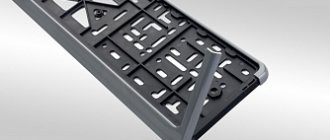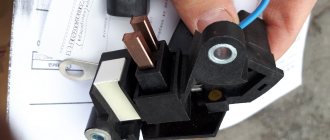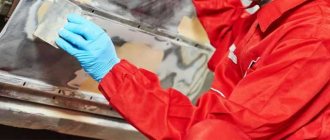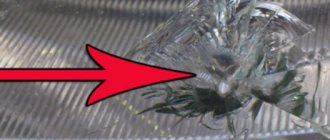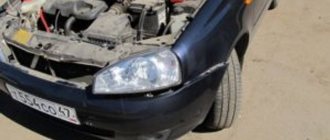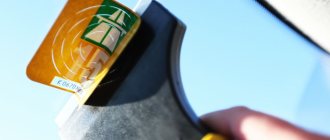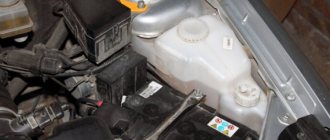Thank you for your help in creating the material from tinting specialists automania-group.ru
The question “how to remove tinting from windows” usually arises after a meeting with traffic police officers. Requirements for tinting are constantly becoming more stringent, and if you used to see cars tinted “in black” often, now it is much less common.
Why do you have to film?
At the beginning of 2021, according to Article 12.5 of Part 3.1 of the Administrative Code, the penalty for tinting is 500 rubles.
On many resources the amount appears to be 1,500 rubles, and in case of repeated violation, 5,000 rubles. This information is not true, although proposals to introduce such amendments to the bill exist, and they may be considered in the State Duma in the spring of 2021. Deprivation of rights for tinting is generally a myth.
You will have to remove the tint if the light transmittance of the windshield is less than 75%, and the front side windows are less than 70%.
The law does not impose any requirements for the transparency of rear windows, the main thing is that the tinting is not mirror-like.
The same requirements apply to the strip on the windshield, and its width should not exceed 14 cm. Measurements are taken from the outside, from the top edge of the glass, at any point.
Traffic police officers are fighting against people who are not afraid of a fine of 500 rubles. Now, along with the fine, they issue an order that has a number of nuances.
The fact is that excessive tinting is considered an administrative offense. The document does not require removing the tint as such, but requires stopping the offense within a specified period.
If the driver does not comply with this requirement, Article 19.3 in Part 1 of the Code of Administrative Offenses may be applied to him, namely: a repeated fine in the amount of 500 to 1000 rubles, or administrative arrest for 15 days.
When can you remove tint yourself?
Removing film material is a lengthy process in which it is necessary to take into account the reason for removal, detonation technology and the service life of the material.
Removing old tint yourself is more difficult than removing a recently applied film. The main reasons for removing tinting material:
- Burnout and defects
During long-term use, the film burns out, detachments and air bubbles appear. Burnt-out material changes color, loses its working functions and attractive appearance.Note.
Color changes due to the use of non-metallic dyes for the material. Bubbles appear due to improper gluing or the use of low-quality adhesive.
- Non-compliance with standards
Often, motorists unknowingly buy a film that is too dark and listen to the advice of unscrupulous and inexperienced craftsmen. As a result, the transparency of the film material does not meet government standards.The traffic rules contain tinting tolerances. The light transmittance of the windshield must be at least 75%. For side glazing, the light transmission threshold is at least 70%.
Note.
Pasting with mirror film is prohibited. For the rear window, the light transmission limit is not standardized, i.e. the degree of light transmission can be any.
The rules also talk about the maximum width of the light protection strip on the front glass. This value does not exceed 140 mm.
If during the inspection a traffic police officer reveals a violation, you will have to pay a fine.
- Damage to glass
If you notice a crack on the glass surface, you need to contact a service station and have the defect repaired. You will have to remove the film yourself or use the help of specialists who will do the work professionally.
Mechanical tint removal
Most often, drivers remove tinting themselves in this way.
The glass lowers a little, after which you need to carefully pry off the edge of the film with any sharp object (stationery knife, blade).
When you can already grab hold of the peeled edges with your hands, you need to pull the film down. It is best to do this slowly, avoiding jerks and controlling how the tint separates from the glass.
This way you can remove the film in one piece. If the film breaks, you need to use a sharp object again. Be careful not to scratch the glass.
This removal method is relevant for tinting that was applied relatively recently.
Thermal removal
Thermal removal involves heating the tint film. This is more effective because when heated it separates much more easily.
We will need a construction hair dryer; if we don’t have one, we can borrow a household hair dryer from our wife/sister. Some recommend removing the rubber seals before heating, although the temperature is not very high (40-50 degrees), so it should not have a negative effect on the rubber.
The glass is heated evenly on both sides, first from the outside, then from the inside. After this, we pry up the edge and also gently pull it down, continuing to warm it up. Those places where the tint holds especially tightly should be heated additionally.
Thermal removal can be done using a steam generator. In this case, you need to be extremely careful and wear gloves to avoid getting burned. Otherwise, the procedure is no different from the one when we used a hairdryer.
What is the best way to remove glue residue?
Various substances are suitable for high-quality removal of glue:
- gasoline (you must first dilute it a little with water and make sure there are no streaks);
- alcohol (cleanses glue residues well);
- ammonia or ammonia (a powerful solvent that will leave the glass clean);
- soapy water or detergent (removes simple glue, but may not cope with expensive ones);
- various solvents (they clean well, but at the same time they can ruin the surface of the glass, for example, acetone).
Removing tinting from glass is not difficult if you use the right products. The most difficult thing is to remove the covering on the road after being stopped by the traffic police. They can demand this on the spot. The rest can be done by anyone. You can also contact professionals at any service center.
Removal without heating
The adhesive used to attach the tint to the glass is usually made with a silicone base, which dissolves well with soap and dishwashing detergents.
The thick solution is poured into a spray bottle and generously applied to the glass, on the side where the tint film is glued. You need to apply several times, and it is best to use newspaper.
Stick it on the glass and wet it periodically. Thanks to the newspaper, the solution will not drain from the film and the effect on it will be more uniform.
After about an hour, you can begin dismantling. As in previous cases, gently pull the film down. If somewhere it holds tightly, apply the solution between the glass and the film and wait a few minutes.
With this method of removing tint, it is important not to rush.
What not to do
First, we’ll tell you how best not to remove tinting from glass. Understanding the most common mistakes will help you avoid them.
In fact, there are few prohibited actions.
- Do not remove film using sharp or heavy objects. This can scratch your car windows. You can also tear the film and have to remove it in patches, this will significantly complicate your task.
- Do not use acetone or other similar strong substances. They do not remove the tint film, but simply partially dissolve it. Pieces of tint remain on the glass and removing them becomes very problematic. Careless use of acetone and its analogues can damage the car's paint.
How to remove old tint
The main difference between the old tinting and the new one is higher adhesion (adhesion) to the glass surface. If you try to remove it mechanically, most likely the picture will be as follows: the base will come off in small pieces, and the tint itself will remain on the glass.
If possible, it is better to remove the glass and place it in a hot bath, but this is a troublesome procedure and is rarely used. More often, an integrated approach is used: first, the glass is soaked in a soapy solution, after which the old tinting is removed using a hairdryer.
Application of ammonia
Even in school, we learn that this substance poses a great danger to humans and the environment, but experienced auto mechanics know how to remove tinting from the rear window without creating a threat. The aggressive chemical compound is incapable of harming the glass or its heating system, but easily dissolves both new and old tinting and dissolves glue. This method involves the following procedure:
- the surface is wetted with a soap solution;
- Ammonia is applied to the prepared surface;
- a correspondingly sized fragment from a plastic garbage bag is placed on top, followed by ammonia being applied on top of it;
- the second fragment is applied from the inside;
- in this form, the glass is left in direct sun (in winter, you can use an infrared heater) provided that the glass does not heat up to more than 40 degrees
- After a few hours, the plastic films are removed and the surface is cleaned.
Before removing tint from a heated rear window using this method, wear a reliable respirator and use chemical-resistant gloves. In most cases, the glue remains, so then you need to use a regular soap solution.
Removing from rear window
Since the law does not prohibit tinting the rear window, the motivation for removing the tint is likely different.
But if this is necessary, you should remember that the mechanical removal method is not suitable for the rear window, since there is a high risk of damaging the heating filaments. If you were unable to avoid damage, read the article on how to restore heating.
In addition, it is difficult to get to the rear window, and you have to work in cramped conditions. Use the thermal removal method, after soaking the film in a soapy solution.
Removing tint with an industrial hair dryer
An ordinary household appliance, which can be found in almost every apartment or private house, is not suitable for this purpose. When removing tint film from a rear window, it is extremely important not to use harsh tools such as a knife or scraper as they will damage the defroster system. Therefore, an industrial hair dryer capable of providing effective heating. Heating should also be carried out up to 40 degrees, so as not to provoke the destruction of the glass surface. The process described above is repeated in the same order, removing the softened glue in time so that it does not seize in untidy lumps.
Headlight tuning
If the headlights were tinted with film, the removal recommendations will not differ from those described above.
It is much more difficult to remove tinting from headlights made using varnish. You cannot use products containing solvents and acetone - the plastic will become cloudy, and the varnish itself will penetrate even deeper into it. If you want, you can do this on a small area of the headlight and see what happens.
More often you have to remove the varnish with fine sandpaper (2000-3000), and then polish the surface of the headlight. If you intend to carry out the removal procedure without removing the headlights, it is recommended to cover the surface around it with masking tape so as not to damage the car's paintwork.

